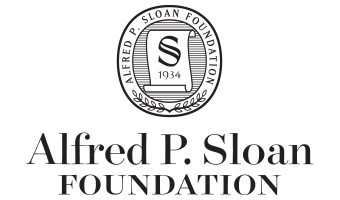The Video DatAbservatory: A platform for behavioral discovery
Rick O. Gilmore
2018-01-26 08:50:37
Support



Agenda
Survey/discussion
Status report
New initiative(s)
Survey/discussion
Developmental science could be more open & transparent
Agree
Disagree
Developmental science should be more open and transparent
Agree
Disagree
Openness and transparency are related to research robustness (e.g., reproducibility, reliability, impact)
Agree
Disagree
Data from developmental research should be more widely and readily available
Agree
Disagree
Methods and materials used in developmental research should be more widely and readily available
Agree
Disagree
I have used data shared by others
Agree
Disagree
If data from publication X or project Y were more widely and readily available, I would use it
Agree
Disagree
Unless there are privacy or contractual limitations, data files described in published papers should be readily available in forms reusable by others
Agree
Disagree
I use video or audio recordings in my teaching
Agree
Disagree
I use video or audio recordings in my current research
Agree
Disagree
I can imagine using video or audio recordings in my research
Agree
Disagree
I use video or audio recordings to document my research procedures
Agree
Disagree
I could envision using video or audio recordings to document my research procedures
Agree
Disagree
Video and audio recordings require extensive and expensive post-processing and coding
Agree
Disagree
It’s hard to find and access data that I might want to repurpose
Agree
Disagree
Once found and accessed, there can be a huge cost in “harmonizing” data from different sources
Agree
Disagree
Developments in machine learning, computer vision and related fields are interesting to me
Agree
Disagree
I would be interested in using machine learning, computer vision, or related tools in my research under the right circumstances
Agree
Disagree
Status update
Funded NSF (2012-16), NICHD (2013-18), & Sloan Fdn (2017-18)
Opened spring 2014
Approaching 1,000 researchers (~680 PIs + ~290 affiliates)
500+ data/stimulus sets (~20% shared), 13,700+ hours

Free, open-source, multi-platform video/audio coding tool
Windows OS fix nearly complete
Updates for transcription
Play & Learning Across a Year (PLAY) Project
Play is the central context and activity of early development
What do parents and infants actually do when they play?
Adolph, K., Tamis-LeMonda, C. & Gilmore, R.O. (2016). PLAY Project: Webinar discussions on protocol and coding. Databrary. Retrieved January 24, 2018 from https://nyu.databrary.org/volume/232
Adolph, K., Tamis-LeMonda, C. & Gilmore, R.O. (2016). PLAY Project: Materials. Databrary. Retrieved January 24, 2018 from https://nyu.databrary.org/volume/254.
- \(n=900\) infant/mother dyads; 300 @ 12-, 18-, 24-months
- 30 dyads from 30 sites across the US
- 1 hr natural activity
- 3 min solitary toy play
- 2 min dyadic toy play
- video tour of home
- Videos coded for
- Emotional expression
- Object interaction
- Physical activity & locomotion
- Full transcript, Communication, and Gesture
- Enhancements to Datavyu for transcription, CHAT compatibility, Windows support
- Demographics + parent-report questionnaires about health, family, temperament
- Ambient sound levels

- Census block group geocoding


- Data openly shared on Databrary
- Adolph, K., Tamis-LeMonda, C. & Gilmore, R.O. (2016). PLAY Project: Materials. Databrary. Retrieved January 24, 2018 from https://nyu.databrary.org/volume/254.
- Adolph, K., Tamis-LeMonda, C. & Gilmore, R.O. (2017). PLAY Pilot Data Collections. Databrary. Retrieved January 24, 2018 from https://nyu.databrary.org/volume/444
- Video as data AND documentation
What questions would you ask about these sorts of data?
How could the data be made maximimally useful to other researchers?
Ideas about seeking additional funding
How infrastructure can enable open, transparent, and reproducible, “big data” developmental science
https://youtu.be/pW6nZXeWlGM https://github.com/ZheC/Realtime_Multi-Person_Pose_Estimation
https://youtu.be/VOC3huqHrss https://pjreddie.com/darknet/yolo/
Jayaraman, S., et al. (2014). Natural Scene Statistics of Visual Experience Across Development and Culture. Databrary. Retrieved January 24, 2018 from http://doi.org/10.17910/B7988V
Cole, P.M., Gilmore, R.O., Scherf, K.S. & Perez-Edgar, K. (2016). The Proximal Emotional Environment Project (PEEP). Databrary. Retrieved January 24, 2018 from http://doi.org/10.17910/B7.248
From static repository to dynamic analysis platform
NSF Research Implementations for Data Intensive Research in the Social, Behavioral, and Economic Sciences (RIDIR)
https://www.nsf.gov/pubs/2018/nsf18517/nsf18517.htm
3-4 awards, anticipated funding $4.5 M
Due February 28, 2018
Our idea
Aim 1: Enhance Databrary’s shared video & audio recordings with new, machine-generated metadata
Aim 2: Create secure, cloud-based workspace for developing and testing machine learning models on Databrary resources
Aim 3: Develop robust workflows for automated gaze direction analysis from video
Aim 1
Collaborate with Tal Yarkoni and adapt his (NIH-funded) pliers package
images/video: faces, objects, visual saliency, indoor/outdoor, text in image
sound: speech/non-speech, sound spectra
How to return ‘tags’ to Databrary in useful form? (time series + summary stats)
Offer tagging of unshared data volumes?
Privacy/confidentiality issues
Aim 2
Cloud-based workspace for analysis & visualization
Linked to Databrary files
Facilitate convenient sshfs or similar file-sharing, version control
Infrastructure to spawn cloud-based virtual machines to manage computationally intensive analyses
`Ingest’ session metadata from spreadsheets
Aim 3
Collaborate with Kim Scott (LookIt), Rhodri Cusack and others
Develop and test new ML model from existing tagged training data + eye tracking
http://cusacklab.s3.amazonaws.com/html/downloads/annotate3.mp4
Source: Rhodri Cusack
The bigger picture
Bring reproducible machine-assisted video/audio tagging to wider range of behavioral scientists
Make data sharing even more appealing, attractive, valuable
Make psychology a more cumulative science (Mischel 2009)
Your turn
Stack
This talk was produced on 2018-01-26 08:50:37 in RStudio 1.1.383 using R Markdown and the reveal.JS framework. The code and materials used to generate the slides may be found at https://github.com/gilmore-lab/2018-01-26-p2c/. Information about the R Session that produced the slides is as follows:
## R version 3.4.1 (2017-06-30)
## Platform: x86_64-apple-darwin15.6.0 (64-bit)
## Running under: macOS Sierra 10.12.6
##
## Matrix products: default
## BLAS: /System/Library/Frameworks/Accelerate.framework/Versions/A/Frameworks/vecLib.framework/Versions/A/libBLAS.dylib
## LAPACK: /Library/Frameworks/R.framework/Versions/3.4/Resources/lib/libRlapack.dylib
##
## locale:
## [1] en_US.UTF-8/en_US.UTF-8/en_US.UTF-8/C/en_US.UTF-8/en_US.UTF-8
##
## attached base packages:
## [1] stats graphics grDevices utils datasets methods base
##
## loaded via a namespace (and not attached):
## [1] compiler_3.4.1 backports_1.1.0 magrittr_1.5 rprojroot_1.2
## [5] htmltools_0.3.6 tools_3.4.1 revealjs_0.9 yaml_2.1.14
## [9] Rcpp_0.12.12 stringi_1.1.5 rmarkdown_1.6 knitr_1.17
## [13] stringr_1.2.0 digest_0.6.12 evaluate_0.10.1



